#cordon caulle
Text
There are few sights on Earth's landscapes as awe-inspiring as a volcano
1.PUYEHUE-CORDON CAULLE, RANCO PROVINCE, CHILE: A stunning photograph of one of this century’s most colossal eruptions. ‘Puyehue-Cordon Caulle in the Southern Volcanic Zone is a complex of two volcanoes: Puyehue and the fissure system of Cordon Caulle. After 51 years of inactivity, in 2011–12, it exploded in what became the biggest eruption of the 21st century so far. An estimated 100million…

View On WordPress
0 notes
Text

Via Columna de sismología: El Cordón Caulle, y por qué está en Alerta Amarilla - La Tercera By Cristian Faría Vega https://www.latercera.com/tendencias/noticia/columna-sismologia-cordon-caulle-esta-alerta-amarilla/221137/
0 notes
Photo

Beauty out of Chaos - Volcanic Lightning
A raging thunderstorm with incessant lightning can inspire fear and awe in anyone caught in its fury. Combine a lightning storm with a volcanic eruption, and images of the apocalypse immediately arise.
Nearly all lightning strikes around the world are formed by thunderstorms that are raging within the great cumulonimbus clouds every day, however there is a form of lightning that has a completely different origin; thunderstorms generated by the ash clouds exploding out of volcanic eruptions.
Volcano lightning can be seen flashing from these massive ash clouds as they spew out from an eruption, the 1980 eruption of Mount St. Helens in Washington State produced a lightning bolt every second. Not all volcanic eruptions generate lightning and the process is less well understood than those forming in thunderstorms.
Scientists recognise two forms of volcanic lightning. The first occurs in the volcanic smoke and ash plume shortly after the eruption ends. The process begins, probably in a similar way to thunderstorm lightning, with the electrification of particles – but in this instance, of ash particles within the expanding eruption cloud. Aerodynamic processes segregate positively charged particles from negatively charged ones in the air above the volcano. Eventually, the charge that has built up between these regions explodes, sending out a lightning bolt, often into the clear surrounding air.
A newly defined second volcanic lightning type arises during the volcano’s explosive phase as electrically charged magma, ash and rock leave the volcanic cone. The result produces continuous, chaotic sparking at the cone summit. How these ejecta become charged is still somewhat of a mystery.
A team of volcanologists from the University of Alabama in the US have discovered tiny but perfectly round spheres of glass in the ash from such explosive events. Glass isn’t something unusual to find in the ash of volcanic eruptions, but what was surprising was that the glass found in the ash samples taken from two volcanic eruptions produced tiny, perfectly round spheres of glass balls and lightning is thought to be the key in creating them. The heat within these ash clouds is so hot, 30,000 degrees Celsius (54,000 degrees Fahrenheit), that it’s thought the glass particles melt to a molten state and then as they cool and fall through the air they form into tiny spheres, similar to ice melting to form a rain droplet only the temperatures are reversed in this process.
It appears that it takes an incredible amount of heat; the heat that lightning produces, to create such perfectly rounded crystal balls and the research carried out by the team at the University of Alabama provides the physical evidence for this.
~ JM
Image Credit, 2011 eruption of Cordon Caulle in Chile: Francisco Negroni/ London National History Museum Wildlife Photography of the year, winner of Environment category.
More Info: Volcanic Lightning: http://bit.ly/1CJvtLy
Lightning generated in a bottle: http://bit.ly/1xbXo5W
Lightning storms: http://bit.ly/1xbWPZC
Genareau, K., Wardman, J. B., Wilson, T. M., McNutt, S. R., & Izbekov, P. (2015). Lightning-induced volcanic spherules. Geology, G36255-1. Accessed 22/03/2015. http://bit.ly/1GGpR3U
#Science#geology#lightning#volcanic lightning#volcano#eruption#ash#research#the earth story#volcanomonday#chile#cordon caulle
484 notes
·
View notes
Text




Erupcion Cordon Caulle, Region de Los Rios, Chile
#photo#photographers on tumblr#travel#nature#vintage#before life#photography#cozy#water#asthetic#thunder
71 notes
·
View notes
Text

A volcanic eruption at Puyehue-Cordon Caulle in Puyehue National Park in the Andes of Ranco Province, Chile, 2011 - by Francisco Negroni, Chilean
25 notes
·
View notes
Photo
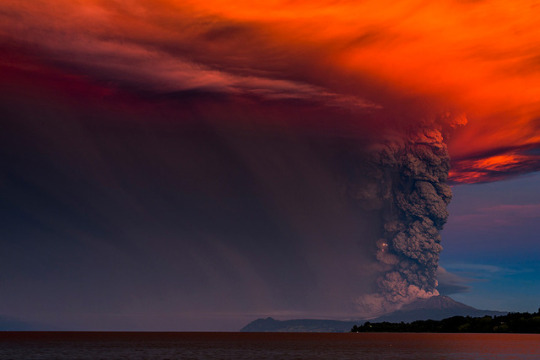

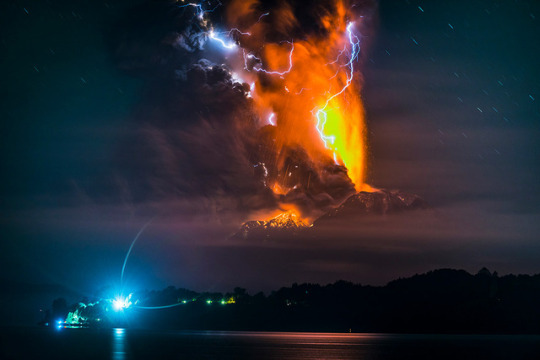


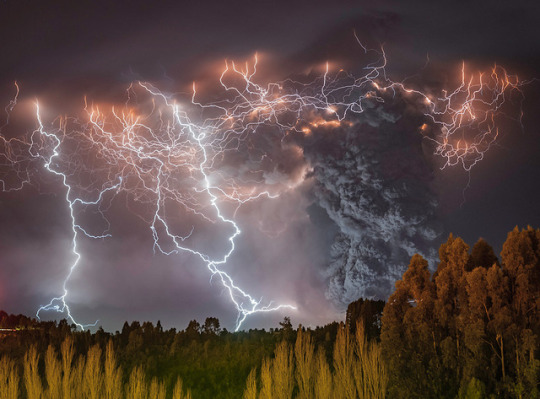
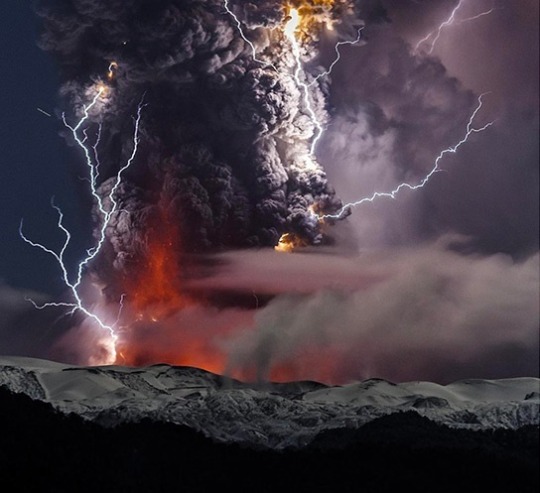
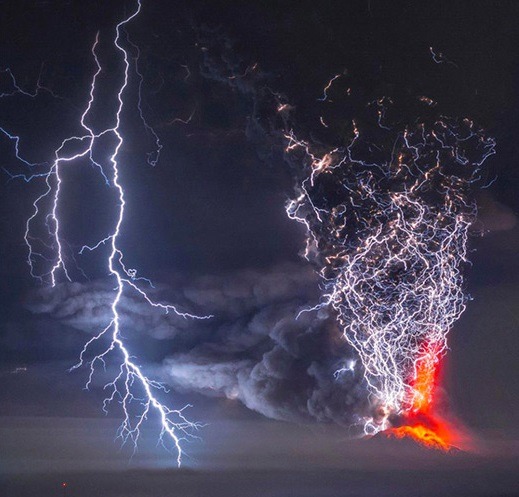
Francisco Negroni’s Marvelous Volcanoes Pictures
Francisco Negroni is a world-known Chilean photographer that has won six international awards for his outstanding shots of erupting volcanoes. In 2011, he made himself known with his photos of the eruption of Cordon Caulle volcano in his home country. « I never really thought about becoming a volcano photographer. It came naturally. When I saw my first eruption with my own eyes in Chile, that’s when I knew I wanted to continue taking pictures of such explosions in my life », he reveals. A technician’s job that perfectly combines the changing natural elements from one minute to the other.
12K notes
·
View notes
Photo

A dirty storm that occurred during the furious eruption of the Cordon Caulle located in the region of the Rivers in Chile .
4 notes
·
View notes
Photo

Lightning bursting over erupting volcano Puyehue-Cordon Caulle, Chile 🇨🇱
404 notes
·
View notes
Photo



Francisco Negroni photos
Francisco Negroni is a world-known Chilean photographer that has won six international awards for his outstanding shots of erupting volcanoes. In 2011, he made himself known with his photos of the eruption of Cordon Caulle volcano in his home country. « I never really thought about becoming a volcano photographer. It came naturally. When I saw my first eruption with my own eyes in Chile, that’s when I knew I wanted to continue taking pictures of such explosions in my life, he reveals.
1 note
·
View note
Photo

🔥 Puyehue-Cordon Caulle volcanic chain, Chile 🔥
1 note
·
View note
Photo

Sunset glow on volcanic plume.
Taken during the eruption of Cordon Caulle in Chile a couple of years ago, this photo shows a plume of grey ash and white steam dispersing as it encounters a windy layer in the atmosphere above, while being gently illuminated by the dying rays of the solar orb as it sets over the Pacific Ocean.
Loz
Image credit: Claudio Santana/AFP
454 notes
·
View notes
Photo

Fulmini intorno al pennacchio di cenere sopra la catena di vulcani Puyehue-Cordon Caulle vicino a Entrelagos, Cile - Carlos Gutierrez
3 notes
·
View notes
Photo

New Post has been published on https://www.deep-white.com.tw/2021/10/27/%e8%bf%bd%e9%80%90%e7%81%ab%e5%b1%b1%e4%b9%8b%e4%ba%ba/
追逐火山之人
智利的Cordon Caulle 是座活火山,最近一次噴發是在2011年,當時有一位勇敢的攝影師Francisco Negroni拍出讓人不敢相信的畫面,火山爆發的能量結合熔岩和閃電,放大了畫面的震攝力。拍攝火山噴發的作品使Francisco Negroni得到六項國際大獎。
0 notes


